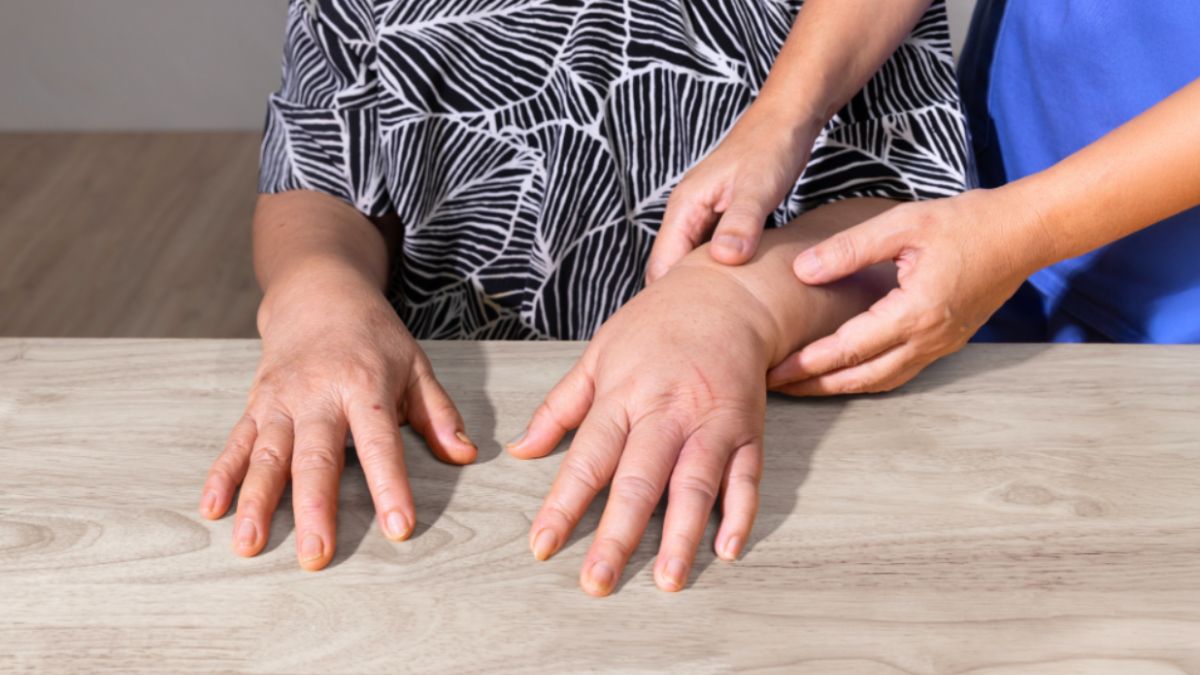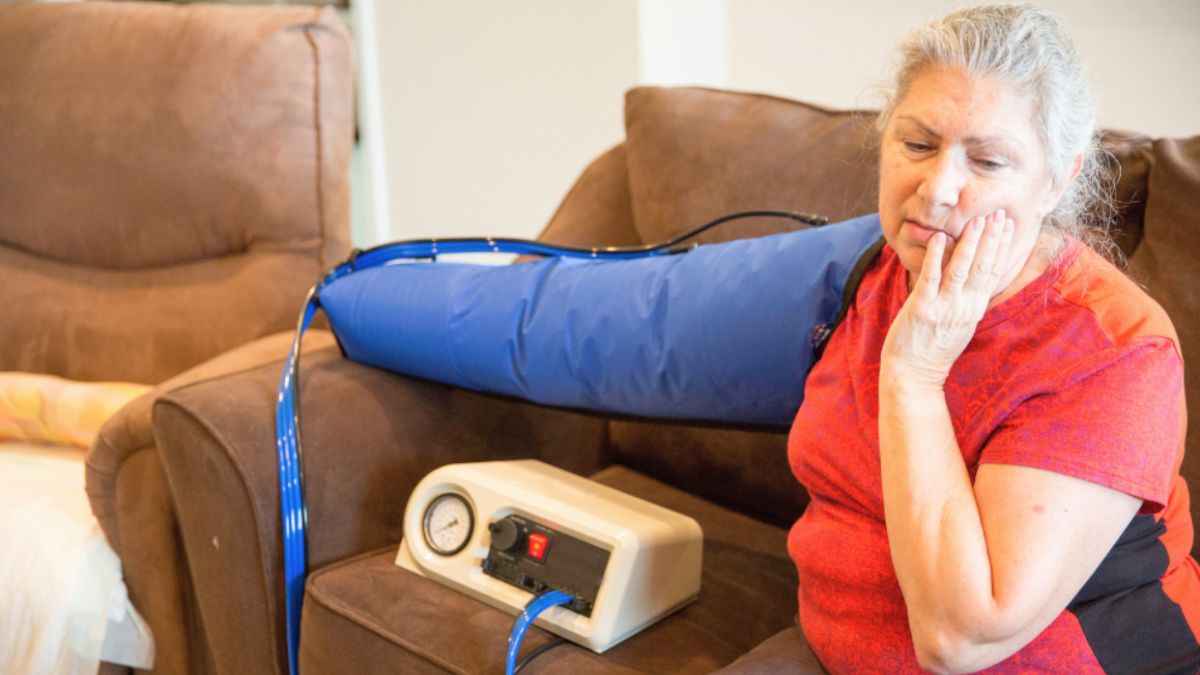Lymphedema Therapy Services:
Post-Surgical Care Plans That Prioritize Swelling Reduction
After surgery, you may notice swelling or fluid buildup in your arms or legs. Some people develop lymphedema following cancer treatment, surgery, or other procedures that affect the lymphatic system. Concerns about ongoing swelling, discomfort, and limited movement can make recovery challenging, but clear guidance and timely care can help you move forward.
Table of Contents
Toggle
At Midas Touch Lymphedema Institute, we understand these concerns and offer comprehensive lymphedema therapy services that focus on your healing journey. Our caring team creates personalized post-surgical care plans that put swelling reduction at the center of your treatment. We work with you every step of the way to help your body heal properly and prevent long-term complications.
What Is Post-Surgical Lymphedema?
Post-surgical lymphedema occurs when surgery injures the lymphatic system. This system returns excess fluid from body tissues to the bloodstream. When surgeons remove lymph nodes or cut lymphatic vessels, fluid can accumulate in the arms, legs, or other areas.
Lymphedema can develop weeks, months, or years after surgery; however, not everyone who has surgery develops it. Large meta-analyses estimate that about 16–21% of patients develop lymphedema after breast cancer surgery, with a higher risk after extensive axillary lymph node dissection compared with sentinel node biopsy. Swelling often begins mildly and may progress without appropriate care. Early referral to lymphedema care after surgery supports long-term health.
Depending on the surgery or radiation field, lymphedema can affect the arms or legs and may also involve the face/neck, chest wall/breast, abdomen, or genitals.
Why Early Intervention Matters
Starting lymphedema care soon after surgery—under your surgeon’s guidance—can improve outcomes. Early treatment may limit swelling before it becomes harder to manage. In the early phase, tissues are typically more responsive to gentle techniques.
Delaying care can allow excess fluid to persist, increasing the risk of skin changes, infections, and reduced mobility. Acting promptly with an appropriate plan can help prevent complications and support a quicker return to daily activities.
Components of Effective Post-Surgical Care Plans
Manual Lymphatic Drainage
Manual lymphatic drainage (MLD) plays an important role within Complete Decongestive Therapy (CDT), which also involves compression, exercise, skin care, education, and self-management. Research supports the use of MLD within CDT, the recognized approach for managing lymphedema, although results vary when MLD is used alone. Clinicians frequently include MLD in CDT to support improved patient outcomes. This gentle massage applies light, rhythmic strokes to stimulate lymph flow toward healthy drainage areas. The therapist follows specific pressure patterns to redirect fluid from swollen tissues.
This hands-on technique often feels soothing and can temporarily reduce swelling and discomfort, especially when incorporated into CDT. Consistent sessions as part of CDT may enhance lymphatic function and decrease limb volume. Patients may notice symptom relief early on, particularly when MLD is combined with compression therapy within the CDT framework.
Compression Therapy

Compression garments are a core part of post-surgical lymphedema care. Sleeves, stockings, and wraps provide gentle, graduated pressure that helps move lymph fluid and limit buildup. Effective January 1, 2024, Medicare Part B covers standard and custom-fitted lymphedema compression treatment items when prescribed by an authorized practitioner and furnished by Medicare-enrolled DMEPOS suppliers, subject to CMS coverage rules. Your therapist will help you select the compression level and style that fits your needs. Have garments professionally fitted and replace them periodically to maintain therapeutic pressure.
Consistent wear supports the benefits of your wider lymphedema care plan. Garments help maintain gains between treatment sessions. Professional fitting and routine replacement also support safe, effective compression over time.
Exercise and Movement Programs
- Gentle Exercises for Recovery
Specific exercises help move lymph fluid through your body naturally. Clinical trials indicate that, when supervised and progressed carefully, resistance and aerobic exercise can be safe and beneficial for people with lymphedema. Your lymphedema plan may include movements that activate muscle contractions to support lymph flow. These exercises start gently and advance gradually—a method supported by research showing that properly supervised resistance and aerobic exercise do not worsen lymphedema.
Simple activities such as ankle pumps, arm circles, and deep breathing can support comfort and function. Your therapist teaches the proper techniques and helps you build a routine that fits your recovery timeline. Consistent movement is key to supporting healthy lymphatic function after surgery. Your therapist will tailor exercises to your condition’s stage and overall health to support safety and benefit. We also offer Yoga Instruction to improve flexibility, stress management, and circulation.
- Progressive Activity Planning
As you heal, your exercise program will gradually become more challenging. Your lymphedema therapy services team will monitor your progress and adjust activities accordingly. This careful approach helps prevent overexertion while encouraging steady improvement in your condition.
Our goal is to help you return to your normal activities safely and confidently. Your therapist will work with you to set realistic goals and acknowledge and support each milestone in your recovery journey. This positive approach helps maintain your motivation throughout the healing process.
Preventing Complications
Focus on infection prevention. Protein-rich swelling and any breaks in the skin can allow bacteria to enter and cause cellulitis. Learn the early signs and seek medical care promptly. Avoid exposing the affected area to extreme heat (e.g., hot tubs, saunas, hot packs), which may worsen swelling.
Your therapy team will review risk factors and prevention strategies tailored to your situation, helping you take an active role in your health. Acting quickly at the first sign of a problem reduces the chance that minor issues become serious complications.
Long-Term Management Expectations
Most people with post-surgical lymphedema require ongoing, long-term management for this chronic condition rather than a complete cure. However, effective lymphedema therapy services can help you live a full, active life with minimal limitations. Understanding realistic expectations helps you stay motivated and committed to your treatment plan.
Your condition may fluctuate over time due to factors like weather changes, illness, or life stress. Having a reliable lymphedema therapy services provider means you have support when these changes occur. We provide peace of mind and consistent quality care.
Working with Your Healthcare Team
Effective lymphedema care involves a coordinated team. Your lymphedema therapist communicates with your surgeon, oncologist, and other clinicians to align treatment plans. This collaboration reduces conflicting recommendations and supports consistent, goal-directed care.
Regular follow-ups let your team monitor your overall health and adjust your plan as needed. Sharing updates about your symptoms, measurements, and progress helps your providers make timely, informed decisions.
People Also Ask
How Soon After Surgery Should I Start Lymphedema Therapy Services?
The time to start lymphedema therapy services is when your surgeon or oncology team clears you—often after incisions have healed and drains are removed. Early referral and education are recommended, and starting gentle therapy early is associated with better outcomes.
Will My Insurance Cover Lymphedema Therapy Services?
Insurance coverage for lymphedema therapy services is based on medical necessity and your specific policy. As of January 1, 2024, Medicare Part B covers both standard and custom-fitted lymphedema compression treatment items when prescribed; coverage, frequency, and cost-sharing follow CMS rules. Commercial plan coverage varies by policy and state. Many plans cover post-surgical lymphedema treatment when prescribed by your clinician (e.g., physician, nurse practitioner, or physician assistant), but benefits differ. Your therapy provider can verify benefits and help with any required prior authorization. For Medicare claims, you should use Medicare-enrolled DMEPOS suppliers and confirm coverage details directly with your insurer.
How Long Will I Need Lymphedema Therapy Services?
The length of time you will need lymphedema therapy services depends on your condition and response to treatment. Some people need intensive therapy for several months, while others benefit from ongoing maintenance sessions over the years. Your therapy team will regularly assess your progress and adjust your schedule accordingly.
Can I Exercise Normally While Receiving Lymphedema Therapy Services?
The ability to exercise normally while receiving lymphedema therapy services depends on your specific condition and stage of recovery. Your therapist will provide activity guidelines and help you return to your preferred exercises gradually. Most people resume normal activities with appropriate modifications and precautions.
Personalized Lymphedema Therapy Services

Post-surgical lymphedema does not need to control your daily life. With appropriate therapy and a coordinated care plan, you can help manage symptoms and maintain your quality of life. Starting early and following your treatment plan consistently can support better outcomes.
At Midas Touch Lymphedema Institute, we provide personalized lymphedema therapy services to support your recovery goals. Our team offers patient-centered care tailored to your needs, with guidance, education, and therapies coordinated with your healthcare providers. We’re here to support your progress throughout your post-surgical care—contact us to book your consultation today.
Midas Touch Lymphedema Institute
Medical Disclaimer: The information provided in this content is intended solely for general informational and educational purposes. It does not constitute medical advice, diagnosis, or treatment recommendations. Do not act upon or rely on any information contained herein without first consulting a licensed healthcare professional regarding your specific medical condition or concerns.
Health conditions and treatment needs vary from person to person. What is appropriate for one individual may not be suitable for another. Always seek guidance from your physician or another qualified healthcare provider before making decisions about your health, starting or stopping any treatment, or changing medications. Never disregard professional medical advice or delay seeking care because of something you have read in this content. In the event of a medical emergency, contact your physician, call 911, or visit the nearest emergency facility immediately.
For information regarding your rights as a patient in Florida, please refer to Florida’s legislation or regulations outlining your rights and responsibilities as a patient.
© All Rights Reserved.
Life Coaching
Services
Areas We Serve
Midas Touch Lymphedema Institute

